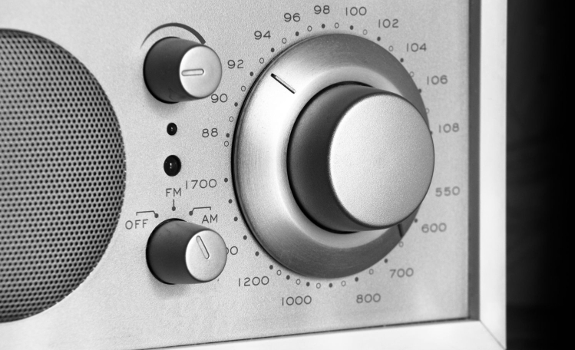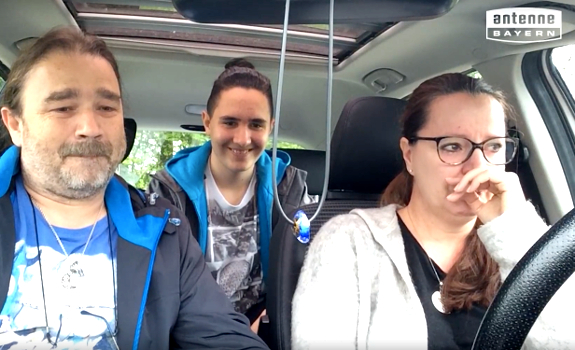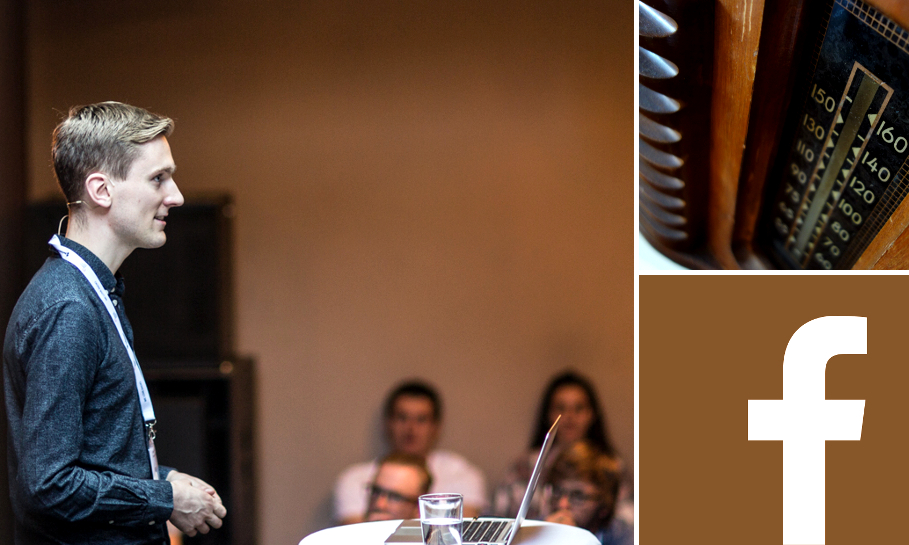Popular (and less popular) Facebook posts show what to do (and not to do) when you want your content to be liked & shared on the world’s biggest social network.
Social media for radio stations was a key topic at the SwissRadioDay 2017 in Zürich. ENERGY Switzerland lead editor for social media, Felix Unholz, shared tips & tricks to increase your radio station’s Facebook reach and engagement by showing educative examples of posts that are not working, versus compelling cases of posts that went viral on Facebook and got many likes & shares.
“Radio has what it takes to be successful in social media”

Many radio broadcasting aspects apply to social media content (image: 123RF / Antonio Li Piani)
Leverage your personality power
In July 2017, the top 30 of Swiss Facebook pages with the most interaction included 3 radio brands (ENERGY, Radio SRF 3 and FM1). That is not a lot compared to the big share of popular Swiss online magazines on Facebook, but the good news is that radio has a lot of social media potential: “Radio personalities can be perfect influencers. They can tell authentic and emotional stories, which people like to hear on social media.”
“They’re closer to the audience than people in the newspaper business”, Unholz says in relation to radio being the first social medium in history (allowing listeners to directly interact by putting callers on air). “When they are well known as brands or presenters, broadcasters can influence their audience, and — very important for social media — they have good sense for timing. Radio has a lot of what it takes to be successful in social media.”
Visualise your radio content
Before looking at examples that do work, he showed a couple of posts that don’t work as much as they should, one of them being a post about a contest (potentially a popular post) without an image. You always want to add a visual to the Facebook post, even the same image you’re using on your station’s website post about this subject. If that doesn’t work automatically, you can use a debugger tool (available on the Facebook for Developers page) to fix it.
You want to choose the right image, though. A post promoting a documentary for which a reporter spent a whole week living in a monastery only shows a picture of an empty monastery hall. It could have been a much cooler picture, like a group photo of the documentary maker with the Black Monks (showing the reporter wearing monastic clothing, too).
Make your description exciting
It’s key to get the attention of your audience by writing a good header for your Facebook post. The opening of the radio documentary post said nothing more than: ‘Day 2 as Monk in a Monastery’, something that Felix Unholz doesn’t consider to be very creative. “It sounds more like a diary than as exciting content”. Being too far out doesn’t work either, and some things that may sound funny on the radio, aren’t necessarily effective on Facebook.
“When you write: ‘Well, do you fancy some wigs, sinking ships and swords?’, most people will think ‘no’, and therefore not read any further.” That post (from a national station with many followers) got 2 likes and 2 shares. Its goal was, by the way, to promote a website post about historic costume drama movies, because a new costume drama movie just entered the cinemas.
“We’re lazy on social media”
Facebook posts should make it fun, easy & simple to act (image: Emojipedia, Thomas Giger)
Activate your Facebook audience
It’s also key to use the right call to action. A station’s contest post is asking people to email them for a chance to win, instead of letting users comment underneath the post, which would have dramatically increased the engagement. Many Swiss radio stations are still using social media to promote upcoming shows and features. Such posts aren’t getting many Facebook likes, because as in this Spotify & Netflix age, consumers are used to instant gratification; they want everything now. “And probably no one will make a note in their calendar to listen to a certain feature at 10:20 on Monday morning”, he says about the call to action in said post.
Choose your questions well
A good way to interact with your audience is asking a question, but not just any question. On the birthday of tennis star Roger Federer, a station asked its Facebook followers which gift they would bring along if they would have been invited to his party, without getting a lot of answers. Unholz thinks that the request was a bit too complicated. “We’re lazy on social media. If something pops into our mind, we’ll answer, but this one needs creativity.” Lesson learned: keep your questions fun & easy to answer. In addition, the post image should make sense. In this case, it’s not related to the tennis star. The pictures shows a frog with a birthday cake…
Boost your engagement rates
Which factors help you make your Facebook post popular? ENERGY Switzerland’s social media lead editor thinks that a good post should do one or more of the following:
- be current by addressing a news topic or a popular trend
- be relevant and/or interesting to reach a broad mass
- include a surprise factor with something yet unseen
- have a clear message that is quickly understood
- stimulate interaction by including your opinion
- reflect everyday life to connect with people
- be entertaining or be sweet or funny
- offer a benefit to your audience
“Different is extraordinary”

14-year old Joshua had wise words for ANTENNE BAYERN’s listeners in a beautiful message written and read for his mother, showing the impact of radio (image: YouTube / ANTENNE BAYERN)
Time your post well
“The difficult thing about actuality is timing”, Felix Unholz has learned. Journalists may know ‘everything’ about a topic sooner than most people, so sometimes a post may come too soon, but sometimes it may come too late as people are already saturated with a topic, or because the trend is already over. Choose a current topic that is already a bit familiar, but still fresh enough to engage your audience. It should also match the moment of the day or week.
He shows a video with upbeat music, showing a young duck running ‘towards the weekend’ (like employees after a long workweek). A very simple video that went viral, as it touched people’s emotions and mood of that Friday. Posted on the Facebook pages of ENERGY Zürich, Basel and Bern, it was viewed 6 million times, and reached 12 million people (in a country with 8.5 million inhabitants, many of which are living outside the 3 Swiss-German cities where the station is broadcasting). Another example of a successful Facebook post shows that visualised broadcast radio can work, too.
Touch your audience’s heart
ANTENNE BAYERN in Germany offered a special Mother’s Day surprise for the mother of 14-year old Joshua. Her son has autism, and recorded a message to tell an emotional story to her and about a million other listeners: “I’m different, but you have taught me something. Different is not weird. Different is extraordinary, and to be honest, everyone is special in a way. That’s how I see it, because you’re always telling it to me this way, and accept me as I am. You know me.”
“With you, I’m feeling understood and safe. You are always there for me; are driving 80 kilometres to take me to school every day. You’re helping me to connect with people, to make friends and to become self-sufficient. For that, I say: thank you. Thank you for your positive thinking. Thank you for your patience. Thank you for your support. Thank you for your understanding, and thank you for your big heart. I’m proud that you are my mother. Mom, I love you so much — your Joshua.” It’s powerful radio that, based on the huge numbers of comments, likes & shares, also has an impact online.
Reflect your local culture
A Facebook post of Swiss-German Radio SRF 3 accomplishes many goals. It uses a popular event for audience interaction, presents standard information in an original way, and (as a national station) does what local colleagues usually do easier; connecting radio to local communities. All with one idea: letting native visitors of an open-air concert read the weather forecast in their dialect. When you thought Swiss-German is a typical language, try to understand these folks reading weather forecasts in the Wallis dialect!
For a local station, it’s often even easier to shoot a funny video about local attributes. ENERGY Bern had their morning show team do a video to ‘explain to the rest of the world how to use the world ‘äuä’ the right way’, and on a hot summer day, Radio 24 in Zürich figured that ‘exceptional temperatures require exceptional measures’, giving two personalities a cool-down by letting them take a car wash in a cabriolet. These examples show that with a little creativity & effort, your radio station can certainly become popular (and even go viral) with Facebook posts.
Part 2 covers how to get people to share your radio station’s Facebook posts, and more.
Header images: SwissRadioDay, Thomas Giger, Facebook






Add Your Comment